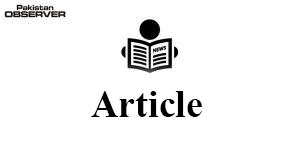Dr Abdul Baseer
Khan Achakzai
PAKISTAN is one of the most populous countries in the world with a population of 221 million and the country has a big burden of malnutrition. Unfortunately, there has been little improvement in the situation over the past decades. The little progress that has been made in addressing under-nutrition is still insufficient to accelerate the human capital development required for its socio-economic growth and to ensure that country meets the Sustainable Development Goals (SDG). Reasons for slow progress include inadequate funding for nutrition sector and poor optimization of resource allocation to various nutrition interventions. Despite no federal funding and no PC1 for Federal Nutrition Program, Nutrition Wing, M/o National Health Services, Regulation & Coordination (NHSRC), in collaboration with Provincial Health Departments, UN Agencies, NGOs and partners, has continued to respond with effective interventions for the prevention and treatment of malnutrition among the most vulnerable segments, especially women and children. These interventions for improving the nutritional status of the population focus on prevention of stunting, counselling, breast feeding, food fortification and community management of acute malnutrition. In addition, adolescent nutrition has been recognized as an important step and foundation for elimination of malnutrition among mothers and children. This is because adolescent girls are future mothers and their appropriate nutrition is instrumental in having healthy mothers which consequently leads to a healthier society. This inclusion of Adolescents in Nutrition Programming Globally has led to the 1000 Days + approach.
Some of these recommendations include: 1. M/o NHSRC may immediately consider developing and deploying extensive human resources for nutrition at district level. A critical mass of people is required at all levels from policymakers, implementers, supervisors, healthcare professionals and community workers. These workers should have expertise and training in nutrition and work full time on nutrition activities in both nutrition sensitive and specific sectors. 2. There are significant nutritional needs for women of reproductive age in Pakistan, and some of the associations with maternal height reflect intergenerational problems, and others reflect more acute exposures during pregnancy. Addressing foetal growth retardation and small for gestational age births, estimated to account for over a quarter of all births, may also reduce the burden of stunting in young infants and improve developmental outcomes. Targeting women nutrition way before pregnancy and during adolescence and preconception care provides a window of opportunity, which can bear enduring results for generations to come. 3. A Centre of excellence for nutrition is required for development of need-based policy reference with global and regional best practices to support the provinces. 4. Improving nutrition will require food safety and social protection. Pakistan has cash transfer programs (EHSAS) and Pakistan Bait-ul-Maal funds, and these transfers can be conditionally linked to health and nutrition services, with upward revision in cash transfer amounts to adjust for food inflation and linkage of beneficiaries with livestock and agriculture schemes.
5. Pakistan must do better to improve rates of exclusive breastfeeding. This requires mass education and stringent implementation of the ‘International Code of Marketing of Breast- milk Substitutes’. Additionally, support structures for working mothers to continue breastfeeding must be provided including paid maternity leave beyond the current limitations, availability of childcare centres and designated area for breastfeeding at work place as well as support for women working in the non-formal sectors. 6. Beyond breastfeeding, Pakistan has never had a concerted programme to improve complementary feeding, which is a major determinant of linear growth deviation after 6?months of age. The current focus and guidelines on complementary feeding are particularly poor. Interventions are needed to optimize the timing of introduction of complementary foods, with appropriate low-cost fortified foods or in food secure households, appropriate home available diets. In high-risk food insecure households, consideration should be given to the provision of low-cost commodities for complementary feeding. 7. Amidst the water scarcity crisis in Pakistan, public sector investment is essential in providing secure and safe water to the population. 8. A comprehensive and a massive national campaign must be launched to disseminate accurate health/ nutrition messages, and to improve environmental and living conditions, promote the use of toilets and reduce the risks of faecal contamination.
Based on these recommendations and as per directions and guidance of National Health Task Force under the chair of the honourable Prime Minister of Pakistan, a comprehensive PC1 for stunting prevention has been developed by the Nutrition Wing. The title of the PC1 is “Tackling Malnutrition Induced Stunting in Pakistan” with the objective “To significantly reduce malnutrition related stunting in Pakistani children in the next 5 years, and virtually eliminate it in children born in 2023 by 2030”. Through this PC1 40% Sehat Sahulat Program beneficiaries, 15 million women of reproductive age group (including annual 3.5 million pregnant and lactating women) and 6 million children under the age of 3 years in the country will be benefiting directly or indirectly through nutrition interventions by 2025. It is important to mention here that the EHSAS Nashwonuma Program, recently launched in 11 districts of the country has the same model of stunting prevention that is envisaged in this PC1 and it would contribute positively in the overall goal of elimination of stunting from Pakistan. Further collaboration and coordination between the two initiatives is expected in the near future also. Pakistan National Nutrition Coordination Council (PNNCC) constituted to be the highest nutrition coordination body to support EHSAS Program is a great step to get patronage and commitment of different sectors involved in addressing malnutrition in the country. However dire the situation of nutrition in Pakistan is, it is definitely ripe for change with a greater current emphasis on nutrition and formulation of various national and provincial nutrition focused strategies; policy makers and planners need to recognize the importance of improved child health and nutrition for national development and look at nutrition strategies as a net investment in the nation’s future.
—The writer is Director National Nutrition Programme, M/o National Health Services, Regulation & Coordination, GoP, Islamabad.









